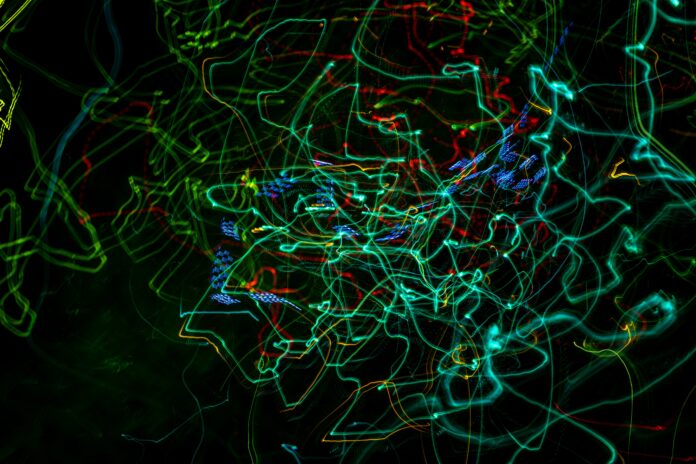Retinal Nerve Fiber Layer (RNFL) is a crucial component of the retina, playing a vital role in transmitting visual information from the photoreceptor cells to the optic nerve. It consists of unmyelinated axons of retinal ganglion cells, which are the output neurons of the retina. The RNFL’s health and thickness are essential indicators of various ocular and neurological conditions, making it a focus of interest in ophthalmology and vision research.
Here are ten important things you need to know about the RNFL:
1. Structure: The RNFL is the innermost layer of the retina, composed of ganglion cell axons that gather at the optic disc, forming the optic nerve head.
2. Thickness Variation: The thickness of the RNFL varies across the retina. It is thickest in the papillomacular bundle, which corresponds to the central vision, and gradually thins towards the peripheral regions.
3. Importance in Glaucoma: RNFL thickness is a key diagnostic marker in glaucoma, a progressive eye disease that damages the optic nerve and can lead to irreversible vision loss.
4. OCT Imaging: Optical Coherence Tomography (OCT) is a non-invasive imaging technique widely used to measure RNFL thickness, providing detailed cross-sectional images of the retina.
5. Neurological Applications: Apart from ophthalmology, measuring RNFL thickness has shown promise in diagnosing and monitoring various neurological conditions, including multiple sclerosis and Alzheimer’s disease.
6. Diagnostic Accuracy: RNFL thickness measurements have high sensitivity and specificity in detecting early glaucoma, making it an invaluable tool for early intervention and treatment.
7. Influencing Factors: Various factors can affect RNFL thickness, such as age, ethnicity, refractive error, and systemic conditions like diabetes and hypertension.
8. RNFL Changes: Certain eye conditions, like optic neuritis, can lead to acute changes in RNFL thickness, which can be monitored through OCT scans during diagnosis and treatment.
9. Progression Monitoring: Periodic monitoring of RNFL thickness can help ophthalmologists assess the progression of diseases like glaucoma and make informed decisions about treatment adjustments.
10. Surgical Considerations: In certain surgical procedures like refractive surgery, considering the initial RNFL thickness and its distribution can be crucial in predicting visual outcomes.
The Retinal Nerve Fiber Layer (RNFL) is a critical component of the retina responsible for transmitting visual information. Its thickness and health serve as vital indicators in diagnosing and monitoring various eye and neurological conditions, with glaucoma being a primary focus. Optical Coherence Tomography (OCT) is the primary imaging technique used to measure RNFL thickness accurately. Additionally, RNFL thickness is influenced by factors such as age, ethnicity, and systemic health conditions. It is also used in surgical planning and assessing visual outcomes. Regular monitoring of RNFL thickness can help detect early changes and guide appropriate interventions, emphasizing its importance in eye care and neurological research.
The Retinal Nerve Fiber Layer (RNFL) is a critical component of the retina responsible for transmitting visual information. Its thickness and health serve as vital indicators in diagnosing and monitoring various eye and neurological conditions, with glaucoma being a primary focus. Optical Coherence Tomography (OCT) is the primary imaging technique used to measure RNFL thickness accurately. Additionally, RNFL thickness is influenced by factors such as age, ethnicity, and systemic health conditions. It is also used in surgical planning and assessing visual outcomes. Regular monitoring of RNFL thickness can help detect early changes and guide appropriate interventions, emphasizing its importance in eye care and neurological research.
RNFL thickness is crucial in the diagnosis and management of glaucoma, a group of eye conditions that damage the optic nerve and often lead to irreversible vision loss. As glaucoma progresses, the RNFL undergoes thinning, which is measurable with OCT scans. By detecting early RNFL changes, eye care professionals can initiate timely treatment, potentially preserving patients’ vision and quality of life.
OCT imaging has revolutionized the way ophthalmologists and neurologists assess the RNFL. The non-invasive nature of OCT scans allows for painless and rapid measurements, making it a preferred method for routine screening and monitoring of various ocular and neurological disorders. These scans provide detailed cross-sectional images of the retina, enabling precise quantification of RNFL thickness and identification of structural abnormalities.
Beyond its relevance in ophthalmology, measuring RNFL thickness has shown promise in the field of neurology. In conditions like multiple sclerosis, where demyelination occurs in the central nervous system, RNFL thinning can be detected early through OCT scans. This early detection can aid in the prompt initiation of appropriate treatment strategies, potentially slowing down disease progression and minimizing neurological deficits.
It is important to recognize that RNFL thickness measurements are influenced by several factors. Age-related changes are common, and normative databases help determine expected values based on age groups. Additionally, ethnicity can play a role, with some studies reporting variations in RNFL thickness among different ethnic populations. Refractive error can also impact measurements, underscoring the importance of accurate refraction in OCT assessments.
Moreover, systemic health conditions like diabetes and hypertension can affect the RNFL. Diabetic retinopathy, for example, may cause thickening or thinning of the RNFL, depending on the disease stage. Hence, considering the overall health status of patients is crucial when interpreting RNFL measurements and assessing their ocular and neurological health.
In the realm of eye surgery, particularly refractive surgery like LASIK, knowledge of the initial RNFL thickness and its distribution is valuable in predicting visual outcomes. Preoperative assessments can help surgeons determine candidacy for such procedures and set realistic expectations for patients.
Overall, the Retinal Nerve Fiber Layer (RNFL) is an indispensable component in understanding ocular and neurological health. Its measurement through OCT imaging allows for accurate diagnosis, monitoring, and treatment guidance in various eye and neurologic conditions. As technology continues to advance, further research on RNFL thickness and its relationship to different pathologies will undoubtedly enhance our understanding of visual and neurological health, leading to better patient care and outcomes.


















